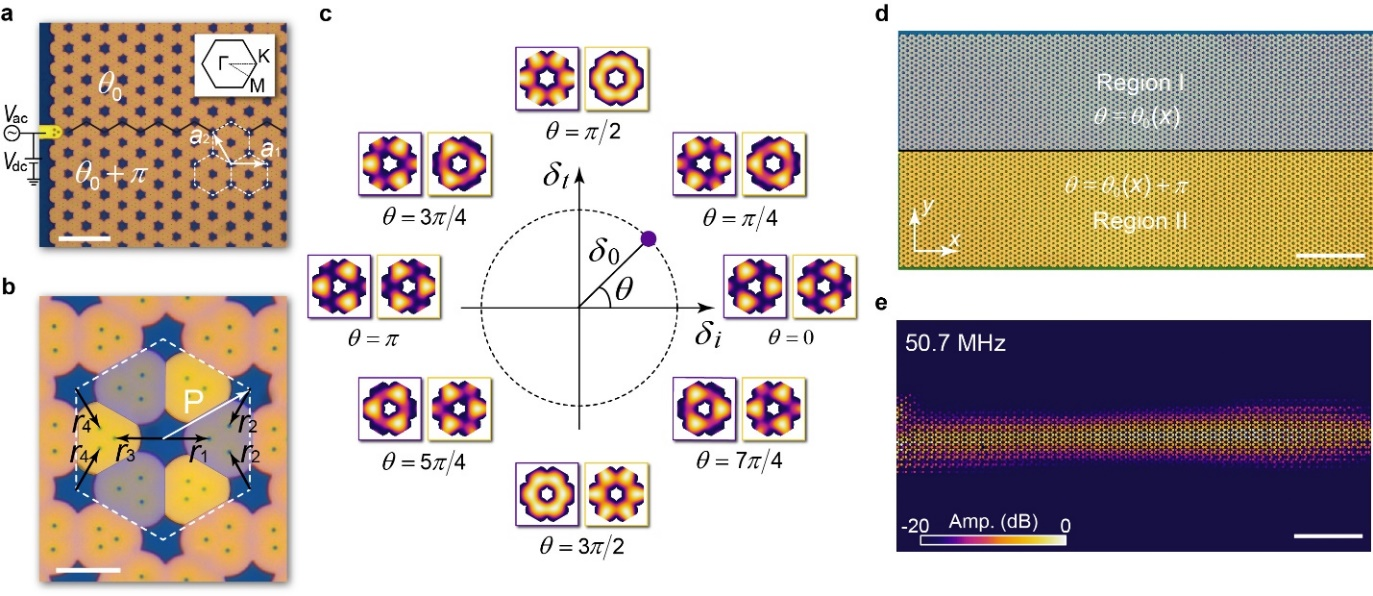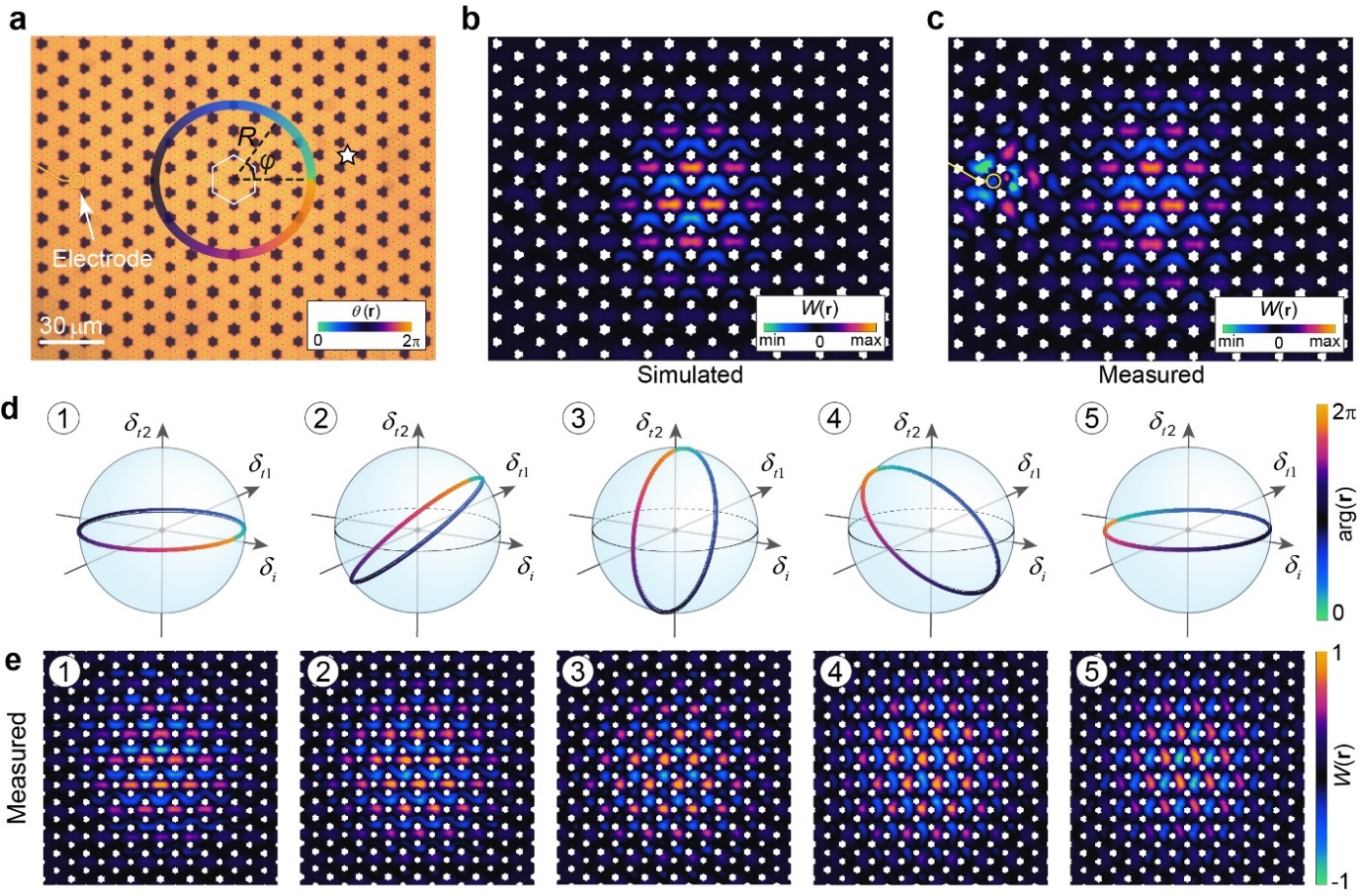CUHK researchers discover a new degree of freedom in nanomechanical topological insulators and publish in Nature Nanotechnology
Researchers in Department of Electronic Engineering, The Chinese University of Hong Kong (CUHK) have discovered a new degree of freedom in nanomechanical topological insulators. In their paper titled “Nanomechanical topological insulators with an auxiliary orbital degree of freedom” published in Nature Nanotechnology on 19 April 2021, they introduced a synthetic orbital degree of freedom in nanomechanical topological insulators, which for the first time enables arbitrary manipulation of topological phases on a chip. They further experimentally realized topological phase transition between distinct topological edge states, and demonstrated zero-dimensional Dirac-vortex states by winding topological phase along the angular direction.
Topological insulators are a new phase of matter studied intensely in recently years, but only the spin degree of freedom has been exploited. The orbital degree of freedom constituting another fundamental attribute in crystals has seldom been investigated. This is because manipulation of orbitals in topological insulators is quite challenging as it requires careful consideration of crystalline symmetry. Researchers from Prof. Xiankai Sun’s group in Department of Electronic Engineering, CUHK have made a fundamental breakthrough and experimentally realized a nanomechanical topological insulator with an auxiliary orbital degree of freedom. This has enabled topological insulators with arbitrary polarization phases and also allows for their smooth transition on an integrated photonic or phononic platform. As a result, many exotic topological states with unconventional functionalities can be realized, facilitating the development of topological integrated circuits with enhanced functionality and scalability.
Figures 1a and 1b show optical microscope images of the integrated nanomechanical crystal, whose orbital states can be controlled by the geometric parameters shown in Fig. 1b. The geometric parameters form a 2D parameter space (Fig. 1c), where the orbital states are determined by angle θ. Varying θ gradually along the propagation direction (Fig. 1d) can result in adiabatic transition between different topological edge states with the orbital degree of freedom. Figure 1e shows the measured spatial distribution of elastic waves propagating along the interface between regions I and II in Fig. 1d, which verifies smooth transition between distinct topological edge states.
Figure 2a shows an optical microscope image of the device for demonstrating topological Dirac-vortex state. Figures 2b and 2c show the simulated and measured modal profile of the Dirac-vortex state, respectively. Figure 2d shows the concept of generalized 3D space to realize the Dirac-vortex states, and Fig. 2e shows the corresponding measured modal profiles of the Dirac-vortex states.

Fig. 1. Topological nanomechanical crystals with an auxiliary orbital degree of freedom and topological edge-state phase transition.

Fig. 2. Nanomechanical Dirac-vortex states.
Relevant information
- Jingwen Ma, Xiang Xi, Yuan Li, and Xiankai Sun, “Nanomechanical topological insulators with an auxiliary orbital degree of freedom,” Nature Nanotechnology 16 (5): 576–583, May 2021. https://doi.org/10.1038/s41565-021-00868-6
- Nature Nanotechnology (https://www.nature.com/nnano/) is an interdisciplinary journal that publishes papers of the highest quality and significance in all areas of nanoscience and nanotechnology.
- Prof. Xiankai Sun’s Photonic and Optomechanical Nanodevice Laboratory. http://www.ee.cuhk.edu.hk/~xksun/



